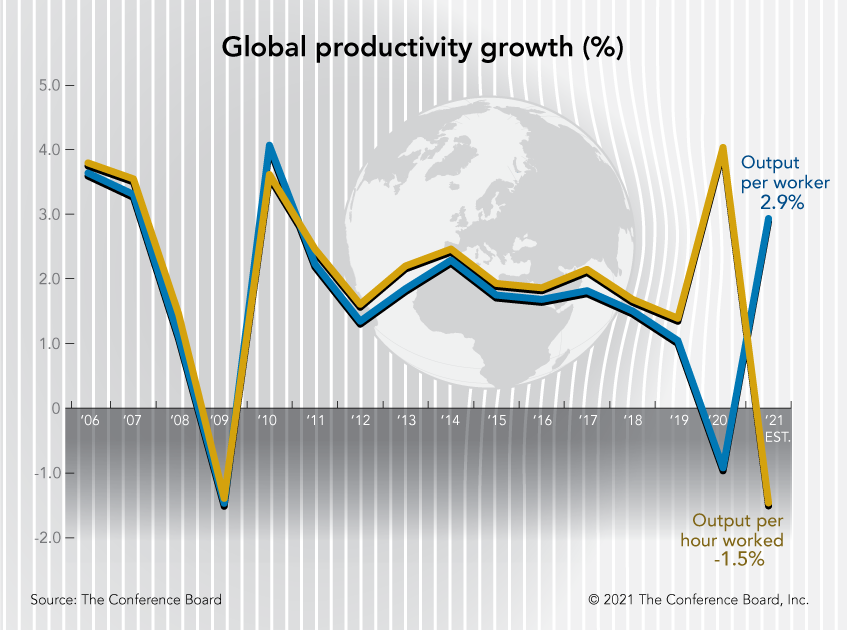|
Higher labor productivity helps firms increase output more
efficiently without increasing their input costs. As measured by output per
worker, labor productivity fell globally by 0.9 percent in 2020, similar to
the drop observed during the 2008-2009 Great Recession. A more accurate
measure of productivity accounts for the number of hours worked by each
worker. Globally, output per hour worked, surged in 2020 to 4 percent—almost
symmetrically opposite of the drop in output per worker. A similar growth
rate in global output per hour was last seen during the recovery from the
Great Recession in 2010. The opposite movements are expected in 2021 for
these two measures of productivity. The unusual divergence in the timing of
the response of these measures in 2020 and 2021 points to the unprecedented
disruptions brought on by the Global Pandemic for economies around the world.
In 2020, output per worker declined, as businesses retained their workforces
despite working fewer hours, often with government support. However, overall
output per hour increased, as productive capacity, particularly in
labor-intensive and low productive activities was reduced, often drastically
to control the pandemic. As the global economic recovery continues in 2021,
we expect to see the reverse picture of 2020, with a decline in global output
per hour worked and an increase in output per worker as many workers return
to jobs in sectors most affected by pandemic mitigation regulations,
particularly in the in-person services sectors.
While economies around the world are recovering in 2021-22, unemployment
rates will return to low levels. This means more firms will compete for fewer
workers who may not be as productive, particularly in mature economies like
the United States. Looking beyond 2022, lifting output per hour growth to
similar levels of output per worker growth seen in 2022 would require
businesses to focus on productivity enhancing investments, including
automation and other digital technologies, training and skills, and organizational
capital for a potentially hybrid (virtual and in-person) work environment.
Learn more:
· Global Productivity Brief
· Underlying data and summary tables and charts
· Window On Webcast
· Indications Podcast
|

No comments:
Post a Comment